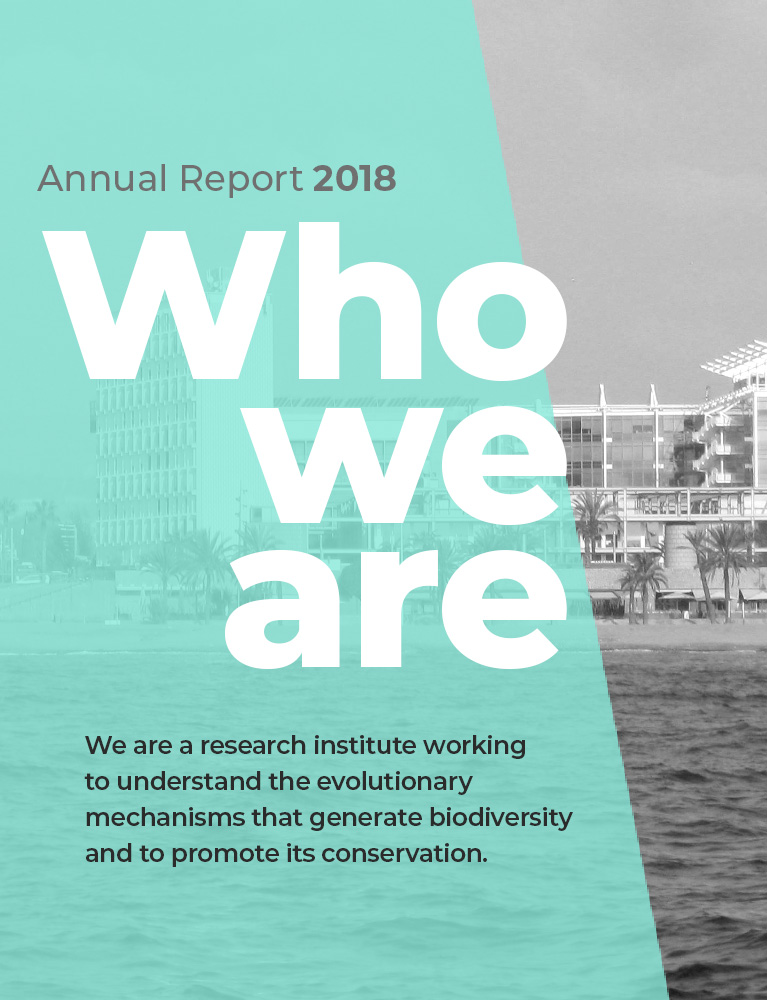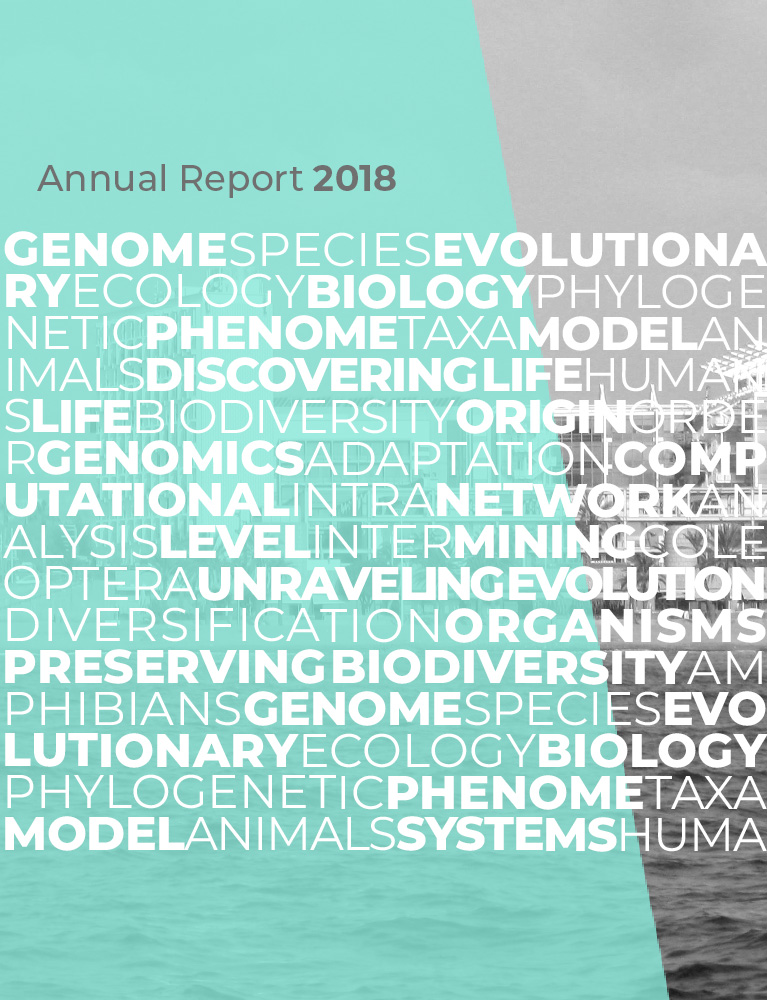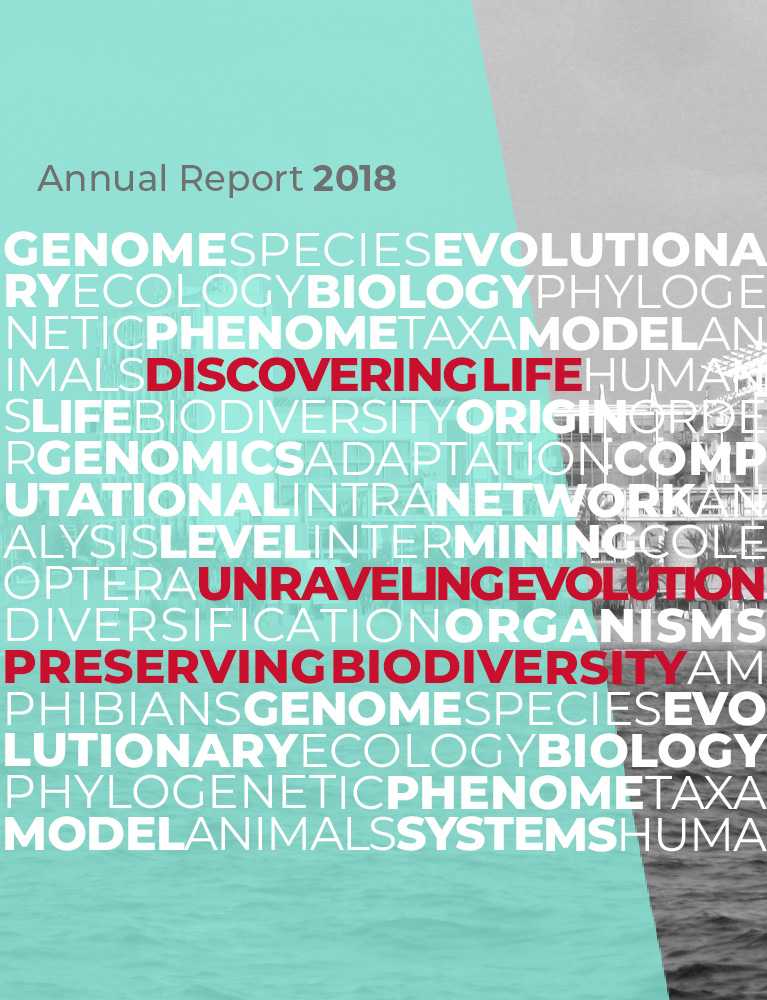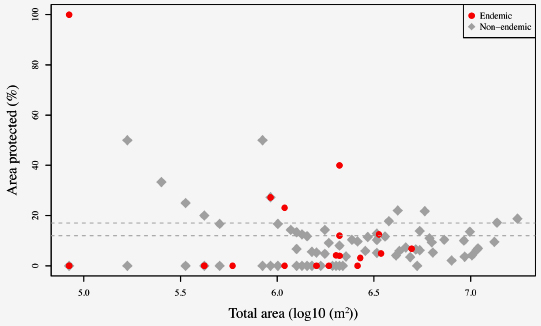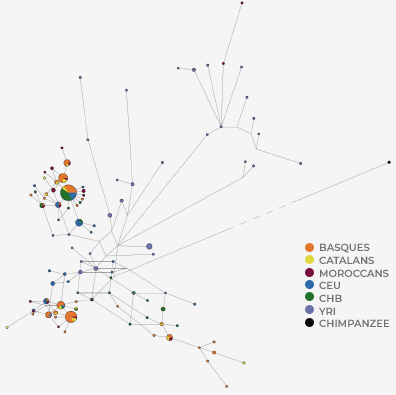A walk through our 10 years

2018 Scientific Highlights
1 Animal biodiversity and evolution
Oman calling for a new reptile conservation plan.
IBE researchers led by Salvador Carranza have used an exceptional database including 5,359 records of 101 species of Oman's terrestrial reptiles to assess the effectiveness of the protected areas in preserving this unique arid fauna. Their results indicate that Oman's 22 protected areas cover only 3.91% of the country and include within their limits 63.37% of terrestrial reptiles and 50% of all endemics, highlighting that large areas of Oman lie outside protected areas and leaving many species unprotected. Their work calls for an urgent evaluation of the coverage of the current protected areas and the identification of further priority-protected territories for reptiles.
Article: Carranza, S.; Xipell, M.; Tarroso, P.; Gardner, A.; Arnold, E.N.; Robinson, M.D.; Simó-Riudalbas, M.; Vasconcelos, R.; de Pous, P.; Amat, F.; Šmíd, J.; Sindaco, R.; Metallinou, M.; Els, J.; Pleguezuelos, J.M.; Machado, L.; Donaire, D.; Martínez, G.; Garcia-Porta, J;...[18 authors]…; Sariri, T.A.; Shukaili, A.S.A.; Akhzami, S.N.A. 2018. Diversity, distribution and conservation of the terrestrial reptiles of Oman (Sauropsida, Squamata). PLoS ONE. 13(2): e0190389 doi: 10.1371/journal.pone.0190389
Reintroducing a regionally extinct butterfly?
Museum collections can help make it possible.
Materials stored in museum collections can provide unique opportunities to document vanished genetic diversity and help direct conservation, as shown in a recent work of an IBE research lab, led by Roger Vila. In this work, IBE researchers used mitochondrial DNA from over 100-year-old museum specimens of the extinct Melanargia russiae (Esper’s marbled white) to determine which extant population should be used as source for its reintroduction in Hungary, where it was extirpated over a century ago.
Article: Dinca V., Balint Z., Voda R., Dapporto L., Hebert P.D.N., Vila R. 2018. Use of genetic, climatic, and microbiological data to inform reintroduction of a regionally extinct butterfly. Conservation Biology. doi: 10.1111/cobi.13111

2 Comparative and computational genomics
What could have extended human lifespan?
Researchers identify 25 genetic candidates.
Potentially, human beings can live for up to 120 years, whereas some closer primates live for half that period. In order to help explaining these longevity differences, IBE researchers led by Arcadi Navarro have identified some of the genes that may have been crucial in extending the life of our species. A new method has allowed identifying 25 candidate mutations, located in genes associated with wound healing, blood coagulation and cardiovascular disorders. The work confirms that some genetic variants that help us in the initial stages of life become harmful once the reproductive stage has ended. Authors suggest that these 25 genes could be candidates to develop new therapeutic targets for treating aging-related diseases, highlighting the potential of an evolutionary approach to medicine.
Article: Muntané, G.; Farré, X.; Rodríguez, J.A.; Pegueroles, C.; Hughes, D.A.; de Malgalhaes, J.P.; Gabaldón, T. And Navarro, A. (2018) Biological porcesses Modulating Longevity across Primates: A Phylogenetic Genome-Phenome Analysis Molecular Biology and Evolution msy105 doi: 10.1093/molbev/msy105
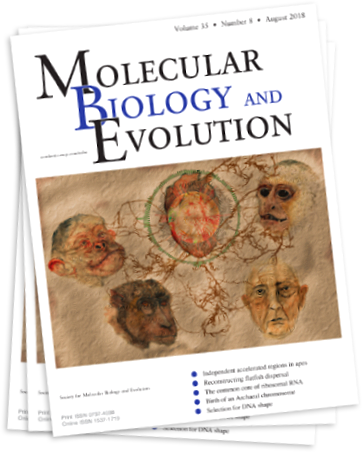
Copper Age Iberians 'exported' their culture - but not their genes - all over Europe.
The largest genomic study to date shows that the first Beaker expansion was one of cultural diffusion. Prehistoric Iberians 'exported' their culture throughout central Europe without exporting their genes. These are the main conclusions of an international study in which an IBE research team led by Carles Lalueza-Fox was involved. The findings show that the culture that produced these bell-shaped beakers extended from Iberia to central Europe without a significant movement of populations, although the Beaker culture would spread to other places through migrations at a later date. The diffusion of the Beaker culture from Iberia is the first example of a cultural phenomenon transmitted as an idea, basically due to a matter of social prestige
Article: Iñigo Olalde, ;...[103 authors]…; Carles Lalueza-Fox, David Reich. The Beaker Phenomenon and the Genomic Transformation of Northwest Europe. Nature. doi: 10.1038/nature25738
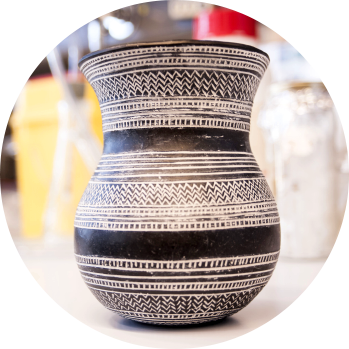
3 Complex systems
Copy-and-paste dynamics, at the heart of evolutionary change.
One of the challenges that evolutionary processes pose is the understanding of its open-ended nature, which allows for an unlimited increase of its complexity. In a recent article, an IBE research team led by Ricard Solé points at tinkering and reusing of existing parts as a mechanism to explore novel designs and promote evolutionary change. This copy-and-paste dynamics would provide the delicate balance between memory and innovation that characterize open-ended evolution processes, in the same way that grammar both enhances and constrains the combinatorial potential of human language.
Article: Bernat Corominas-Murtra, Luís F. Seoane, Ricard Solé. Zipf’s Law, unbounded complexity and open-ended evolution. 15. J. R. Soc. Interface doi: 10.1098/rsif.2018.0395
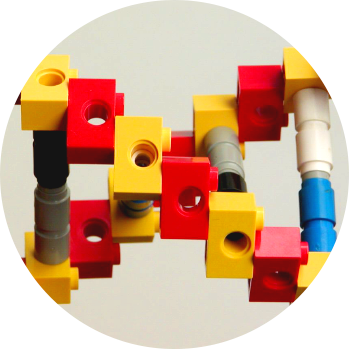
The architecture of mutualistic networks as an evolutionary spandrel.
In biology, it is often assumed that all traits are adapted for the purpose they are used for. However, some traits can also evolve for a purpose and end up carrying out another function, or just be by-products of other trait's adaptation. Often these traits are called evolutionary spandrels, in an analogy to the spandrels found in cathedrals - beautifully decorated but originally meant to be just a support between the roofs and the bows. Now an article from an IBE team led by Ricard Solé and first-authored by Sergi Valverde suggests that networks of mutualistic species - like plants and animals - might actually represent evolutionary spandrels. In their work, IBE researchers could reproduce the structural patterns of mutualistic networks by a simple dynamical model with no selection-driven coevolution of traits, pointing at these patterns as evolutionary byproducts of the network generative process.
Article: Valverde, S.; Piñero, J.; Corominas-Murtra, B.; Montoya, J.; Joppa, L.; Solé, R. (2018) The architecture of mutualistic networks as an evolutionary spandrel. Nature Ecology and Evolution. 2(1):94-99 doi: 10.1038/s41559-017-0383-4
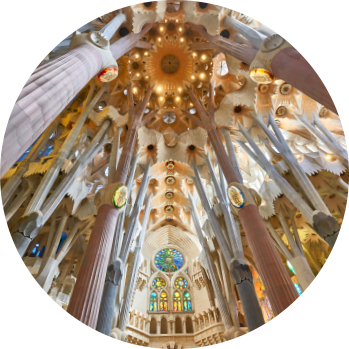
4 Functional genomics and evolution
A new set of genetic tools to study the origins of multicellularity.
How animals emerged from their unicellular ancestor remains a major evolutionary question. We know that the unicellular ancestor of animals had an unexpectedly complex genetic repertoire, including many genes that are key to animal development and multicellularity, but these analyses are hampered by the lack of genetic tools. Now a team of IBE researchers, led by Iñaki Ruiz-Trillo, have developed the first set of genetic tools that will convert Capsaspora - one of the closest unicellular relatives of animals - into a unique model to investigate the origin and evolution of animal multicellularity.
Article: Parra-Acero H.; Ros-Rocher N.; Perez-Posada A.; Ko?yczkowska A.; Sánchez-Pons N.; Nakata A.; Suga H.; Najle S.R.; Ruiz-Trillo I. 2018. Transfection of Capsaspora owczarzaki, a close unicellular relative of animals. Development (Cambridge). 145(10): dev162107 doi: 10.1242/dev.162107
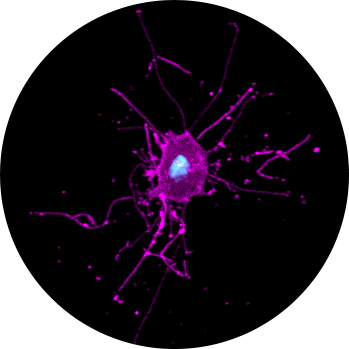
Identified a regulatory mechanism conserved throughout insect evolution.
IBE Researchers led by Xavier Bellés, Maria Dolors Piulachs and José Luis Maestro have identified a highly conserved regulatory mechanism involved in many physiological functions as well as in the protection of cells against genetic threads. Proteins Argonaute 1 and 2 were known to be respectively responsible for microRNA and short interfering RNA mechanisms. However, this was demonstrated only in the fruit fly, Drosophila melanogaster, a most modified insect that emerged some 100 million years ago. Now the IBE teams have found that the same sorting specialization operates in the German cockroach, Blattella germanica, a much less modified insect that emerged some 200 million years before the fruit flies. The findings imply that the above specialization is evolutionary conserved, at least from cockroach to flies, and might stem from the last common ancestor of extant insects.
Article: Rubio, M.; Maestro, J.L., Piulachs, M.D.; Belles, X. (2018) Conserved association of Argonaute 1 and 2 proteins with miRNA and siRNA pathways throughout insect evolution, from cockroaches to flies. Biochimica et Biophysica Acta - Gene Regulatory Mechanisms. 1861(6):554-560 doi: 10.1016/j.bbagrm.2018.04.001
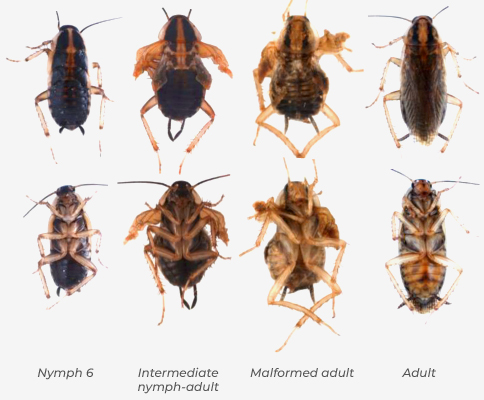
5 Population genetics
Chimpanzee genome reveals
the footprints of natural selection.
One of the most surprising advances of biology is the possibility of finding in the genome the footprints of natural selection. Recently, IBE researchers led by Jaume Bertranpetit have analysed these traits in the four subspecies of chimpanzees. For that they applied many different positive selection tests to whole genome sequences and trained a machine learning algorithm with extensive computer simulations of different selective scenarios. Results showed shared signals of selection in all subspecies, particularly in genes associated with immunity and muscle function. However, the analysis also reflected the unique demographic and adaptive history of each subspecies, targeting genes associated with male reproduction and DNA repair. With these results, IBE researchers have created a complete genome browser that can be used as a community resource.
Article: Nye J.; Laayouni H.; Kuhlwilm M.; Mondal M.; Marques-Bonet T.; Bertranpetit J. 2018. Selection in the Introgressed Regions of the Chimpanzee Genome. Genome biology and evolution. 10(4):1132-1138 doi: 10.1093/gbe/evy077
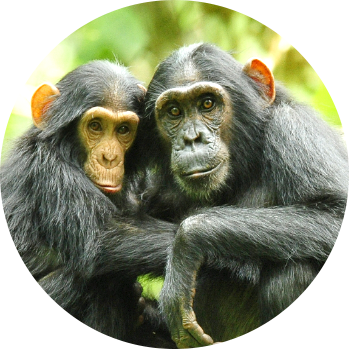
Rh- didn't give Basques an evolutionary advantage.
Within Europe, Basques are one of the few populations to stand out genetically. This was first pointed out already in the 1940s, when blood testing in Basque refugees from the Spanish Civil War showed that they had a world record for Rh-. Now IBE researchers led by David Comas set out to test whether this was due just to random effects amplified by the small population size of the Basques, or whether somehow Rh- gave Basques some selective advantage. The usual footprints that adaptation leaves in the genome were not found around the Rh gene in Basques, so the authors conclude that there isn’t anything exceptional happening with Rh in the Basque Country.
Article: Flores-Bello A.; Mas-Ponte D.; Rosu M.E.; Bosch E.; Calafell F.; Comas D. 2018. Sequence diversity of the Rh blood group system in Basques. European Journal of Human Genetics. doi: 10.1038/s41431-018-0232-1
10 years in numbers
 Funding
Funding
RESEARCH
PROJECS

ERC
GRANTS

ICREA
RESEARCHERS
 Publications
Publications
PUBLICATIONS
AND CELL PUBLICATIONS
 Conservation projects
Conservation projects
 Awards
Awards
MEDALS
2016, 2018
Medical Institute IEC Award, 2017
2017
Investigator Award, 2013
2018 in numbers
 Staff
Staff
MEMBERS
STAFF

SCIENTIFIC STAFFby professional category
INTERNATIONAL
RESEARCHERS

ARE REPRESENTED
AT IBE.
 Publications
Publications
RESEARCHERS
 Competitive and private funding
Competitive and private funding
INTERNATIONAL
RESEARCH PROJECTS






